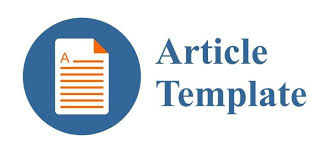Critical thinking in higher education
Farrukh Aminov
Teacher of Karshi State University,Uzbekistan
Keywords: Critical thinking education. skill
Abstract
Critical thinking skills are considered to be a paramount importance in tertiary education. Some private universities in Uzbekistan have been using this skill effectively. Many teachers argue that students tend to assess the arguments of others as well as their own, tackle arguments with the help of critical thinking. Implementation of critical thinking skill into every university in our country is believed to be first and foremost step. Thinking critically, students can gain social empowerment, improve communication, employability and networking. According to Tsui (2002), education of cognitive skill along with critical thinking can allow people to ameliorate their functioning in many situations. Some researchers and educators put a great emphasis on the importance of critical thinking pedagogy in higher education. However, they also claimed that how such skills could be encouraged through instruction. It is argued that if critical thinking is articulated in teaching subject specific knowledge and skills, critical thinking instruction tends to show students productivity in education while others feel that they ought to be taught separately because critical thinking skills are a generalized subset of skills. (Ennis,1989)
References
Tsui, L. (2002). Fostering critical thinking through effective pedagogy: Evidence from four institutional case studies. Journal of Higher Education
Ennis, R. H. (1989). Critical thinking and subject specificity: Clarification and needed research. Educational Researcher
Glaser, E. M. (1942). An experiment in the development of critical thinking. Teachers College Record
Elder, L., & Paul, R. (2009). The thinker’s guide: A glossary of critical thinking terms and concepts, foundation for critical thinking. Dillon Beach, California.
Banning M. (2006). Measures that can be used to instill critical thinking in nurse prescribers. Nurse Education in Practice, 6, 98-105
Brookfield, S. (1987). Developing critical thinkers: Challenging adults to explore alternative ways of thinking and acting. San Francisco: Jossey-Bass.
Simpson E. & Courtney, M. (2002). Critical thinking in nursing education: Literature review. International Journal of Nursing Practice, 8(2), 89-98.
Acker, J.R. (2003, Autumn). Class acts: Outstanding college teachers and the
difference they make. Criminal Justice Review, 28 (2), 215-231. Retrieved April 12,
, from Criminology: A SAGE Full-Text Collection database.
Tremblay, K.R., Jr., Downey, E. P. (2004, Summer). Identifying and evaluating
research-based publications: Enhancing undergraduate student critical thinking
skills. Education
St. Clair, R. (2004, Summer). Teaching with the enemy: Critical adult education in
the academy. New Directions for Adult and Continuing Education
Vanderburgh, P.M. (2005, September). Open-book tests and student-authored
exam questions as useful tools to increase critical thinking. Advances in Physiology
Education, 29(3), 183-184.
Braun, N. M. (2004, March/April). Critical thinking in the business curriculum.
Journal of Education for Business
Elder, L. (2004, Winter). Diversity: Making sense of it through critical thinking.
Journal for Quality and Participation
Brinton, D. M., Snow, M. A., & Wesche, M. B. (1989). Content-based second language instruction. Boston, Massachusetts: Heinle & Heinle.
Brown, H. (2007). Teaching by principles, an interactive approach to language pedagogy. New York: Pearson Education Inc.
Chamot, A. (1995). Creating a community of thinkers in the ESL/EFL classroom. TESOL Matters, 5(5), 1, 16.
Crocker, J. L., & Bowden, M. R. (2011). Thinking in English: A content-based approach. In A. Stewart (Ed.), JALT2010 Conference Proceedings. Tokyo: JALT.






